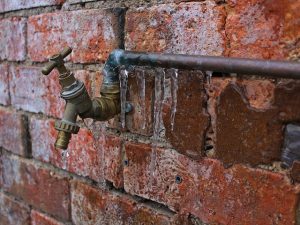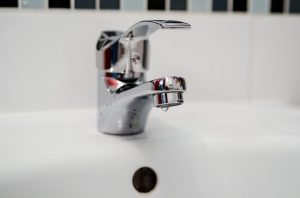 Professional property managers like Martin Feinberg know that proper maintenance is essential. This is especially true in some areas during the winter, when excessive cold and/or moisture can cause a myriad of problems. Cold weather damage such as frozen or burst pipes can lead to expensive repairs, particularly if they aren’t quickly dealt with in the right way. Though winterization will help stop frozen pipes before they start, follow the steps below if worse comes to worse to minimize the damage.
Professional property managers like Martin Feinberg know that proper maintenance is essential. This is especially true in some areas during the winter, when excessive cold and/or moisture can cause a myriad of problems. Cold weather damage such as frozen or burst pipes can lead to expensive repairs, particularly if they aren’t quickly dealt with in the right way. Though winterization will help stop frozen pipes before they start, follow the steps below if worse comes to worse to minimize the damage.
Handling Burst Pipes
Water pipes in homes and apartments can freeze and/or burst if they are exposed to cold temperatures without protection such as insulation to keep them at a stable temperature. Though not every frozen pipe will burst, if the pressure from the expanding ice becomes too great a flow of water will be unleashed in your home that can cause a lot of damage very quickly.
If the worse happens, tenants and property managers need to be prepared to:
- Immediately locate and shut off the main water supply to minimize flooding. This can be as simple as flipping the shut-off valve in your home, or as complicated as calling the municipal water company and requesting someone be sent to shut off the water supply to the building. Property managers and tenants should know which will be necessary for their property.
- Dry the affected area as quickly as possible by removing the water using mops, sponges, towels, and a shop vac or wet/dry vacuum.
- Call the property manager to report the problem ASAP.
- Run a dehumidifier in the space to prevent damage from excess moisture.
- Call a licensed plumber to ensure the pipe is appropriately repaired.
Assessing a Frozen Pipe
Not all frozen pipes become burst pipes so a leak isn’t always the best indicator of a pipe in trouble. Rather than waiting for water to appear, experienced property managers can instruct renters to look for warning signs after a big freeze, such as faucets that don’t flow correctly or toilets that don’t refill when flushed. Such signs can help diagnose a pipe that needs to be thawed before damage is done.
Thawing a Frozen Pipe
Before attempting to thaw a pipe, the water to the affected area should be shut off. Damaged pipes often start to leak as ice melts, and shutting off the water before pipes are defrosted will prevent water damage before it has a chance to start. Even after the water supply is shut off, be prepared for spillage with towels and a bucket. It’s almost impossible to work on water pipes without some water spilling out.
The easiest way to defrost pipes is with a space heater, infrared or incandescent heat lamp, or hair dryer. Frozen pipes can sometimes also be wrapped in heat tape to thaw a specific area. Never use an open flame to thaw pipes; the fire hazard is too great.
Preventing Frozen Pipes
An ounce of prevention is worth a pound of cure and this is especially true when it comes to dealing with frozen pipes.
 To stop the problem before it starts, property managers can instruct tenants to:
To stop the problem before it starts, property managers can instruct tenants to:
- Leave faucets running at a trickle during the coldest parts of the day or night.
- Open cabinet doors to warm up the pipes under sinks and inside cabinets.
- Wrap vulnerable pipes with electrical heat tape and plug in when temperatures drop to dangerous levels.
- Insulate pipes with foam insulation to slow the loss of heat.
- Remove garden hoses attached to outdoor faucets and cover with foam protector.
- Heat unheated areas (such as an attached garage or basement) with a permanent heater, to keep the temperature above freezing.